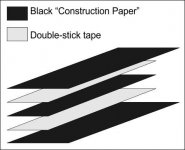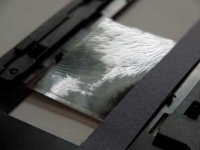...
The V700 saunds alright for its price, does it do 6x7 as well..?
Thanks.
Vegas.
Anything up to and including 8x10. It comes with carriers for 4x6, 120/620 strips, 35mm strips, and 35mm mounted slides and a mask for 8x10. 8x10, with the mask, lies directly on the glass. You can put any other odd sized film on the glass with the 8x10 mask.
I've made "adapters" out of heavy black construction paper to allow me to put a range of old film sizes (122, 116/616, 127, 110, ...) into various of the strip/sheet carriers for my v700.
I use an Imagon at the gallery where I work. I scan 35mm slides for the artist who owns the gallery and then make prints, generally from 20x30 to 40x60. The scanner works very well, but isn't perfect. At home I use a v700 for scanning everything under the sun; my own film work from years ago (B&W and color; 16mm subminiture, 35mm, 120 6x6, 120 6x9, Polaroid 3 1/4 x 4 1/4, & 4x5) and, more often, old family film (B&W and color; 16mm subminiture through 3 1/2 x 5 1/4" film pack).
Despite being exposed to the Imagon, I'm quite happy with the results from my v700.




